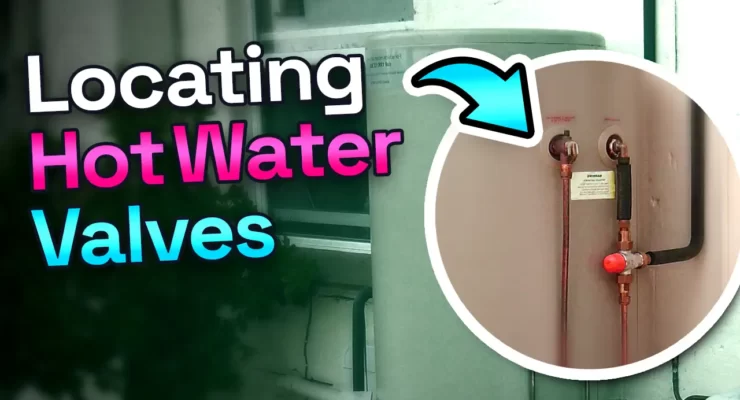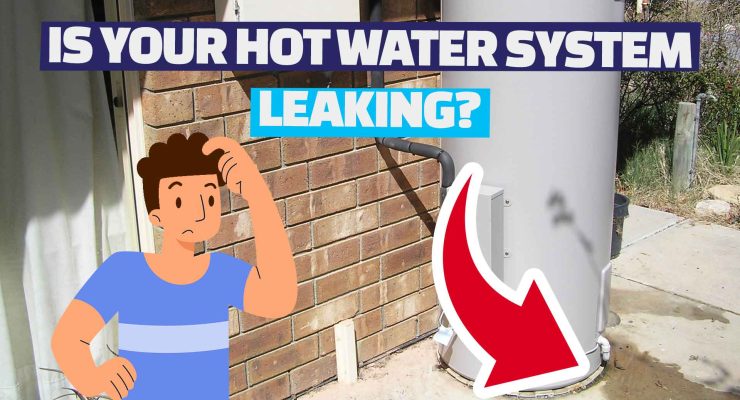Fast read
T&P (Temperature and Pressure) relief valves are crucial safety features on all tank water heaters. Located high on the tank's edge or top, this valve is connected to a pipe that extends to just above the floor. It releases water when the temperature or pressure exceeds safe levels, preventing dangerous buildups.
To ensure safety, homeowners should inspect the T&P valve annually. Testing is simple: lift the lever and listen for water discharge. If water flows, the valve is working correctly. If you hear trickling, the valve might be leaking, indicating a possible fault or an issue with the water pressure regulator or thermostat.
Check for leaks by feeling the drain line for warmth, which suggests hot water leakage. Address any issues promptly to maintain safe operation and prevent potential hazards.
Where Is the Hot Water Heater Pressure Relief Valve To Turn Off My Hot Water?
T&P valves, or temperature and pressure relief valves, are crucial safety features found on all tank water heaters. To ensure your water heater operates safely and efficiently, it’s essential to understand the importance of the T&P valve, know its location, and perform regular maintenance and also know how to turn off your hot water system if needed.
What is a T&P Valve?
A temperature and pressure relief valve serves two primary functions. First, it opens momentarily to discharge small spurts of water if the tank’s temperature rises beyond a specific level. Second, it releases pressure if the tank pressure exceeds 150 psi. Both actions are vital for preventing potential damage to the water heater and ensuring the safety of your home.
Locating the T&P Valve
The T&P valve is typically located high on the tank’s edge or on top. It’s connected to a discharge pipe that runs down the side of the water heater and stops a few centimetres above the floor. Knowing the exact location of your T&P valve is crucial for regular inspections and maintenance.
Why Regular Inspections Are Important
Regular inspections of the hot water heater pressure relief valve are essential for maintaining your water heater’s safety and efficiency. It’s recommended that homeowners test the T&P valve at least once a year. By doing so, you can ensure the valve is functioning correctly and address any issues promptly, preventing potential safety hazards.
How to Test the T&P Valve
Testing the T&P valve is a straightforward process that you can perform yourself. Here’s how to do it:
- Turn Off the Power: Before testing the valve, turn off the power to your water heater. For gas water heaters, turn the gas control valve to the “pilot” setting.
- Prepare for Testing: Ensure the valve is attached to a discharge pipe that directs water to a drain or a suitable discharge location. This pipe helps manage the water released during the test.
- Lift the Lever: Carefully lift the lever on the T&P valve. You should hear water discharging from the tank and escaping through the pipe. This sound indicates that the valve is working correctly. If water flows freely, the test is successful.
- Observe and Listen: After lifting the lever, listen for any unusual sounds. If you hear trickling water coming from the heater, it could indicate a leaking valve. A properly functioning valve should not leak after the test.

Diagnosing and Fixing a Leaking Valve
If you suspect your T&P valve is leaking, it’s essential to diagnose the cause accurately. Here are the steps to determine if the valve is leaking and what actions to take:
- Check for Accumulated Water: Inspect the area around the tank for any signs of water accumulation. This could be an indicator of a leaking valve.
- Determine the Cause: A leaking valve can be caused by several factors:
- Faulty Valve: The valve itself might be defective and you will need to replace the valve.
- Water Pressure Regulator: There could be an issue with the water pressure regulator valve.
- Thermostat Problems: The thermostat might be malfunctioning, causing excessive pressure buildup.
Replacing a Faulty T&P Valve
If you’ve determined that the T&P valve is faulty, replacing it is crucial for maintaining the safety of your water heater. Here’s a step-by-step guide:
- Turn Off the Water Heater: Ensure the power to the water heater is turned off, for electric units, switch off the breaker. For gas hot water systems, turn the gas control valve to the “pilot” setting.
- Drain the Tank: Attach a garden hose to the drain valve at the bottom of the tank and run the hose to a suitable drain location.
- Remove the Faulty Valve: Use a wrench to remove the faulty T&P valve. Be cautious, as there might still be some residual pressure in the tank.
- Install the New Valve: Wrap Teflon tape around the threads of the new T&P valve to ensure a tight seal.
- Refill the Tank: Close the drain valve and remove the hose, open the cold water supply valve to refill the tank. Once the hot water tank is full, turn on the power or relight the pilot for gas units.
Turning Off Your Hot Water System
In situations where you need to perform maintenance or address a significant issue, knowing how to turn off your hot water system is crucial. Here’s how to do it:
- For Electric Hot Water Systems: Locate the breaker panel and switch off the breaker for the water heater.
- For Gas Water Heaters: Turn the gas control valve to the “off” position. This will shut off the gas supply to the heater.
- Turn Off the Water Supply: Locate the cold water supply valve on the water heater and turn it off. This will prevent water from entering the tank.
- Drain the Tank: Attach a garden hose to the drain pipe and run it to a suitable drain location. Open the drain valve to empty the tank.
- Relieve Pressure: Open a hot water faucet in your home to relieve any remaining pressure in the tank.
By following these steps, you can safely turn off your hot water system and perform any necessary maintenance or repairs.



